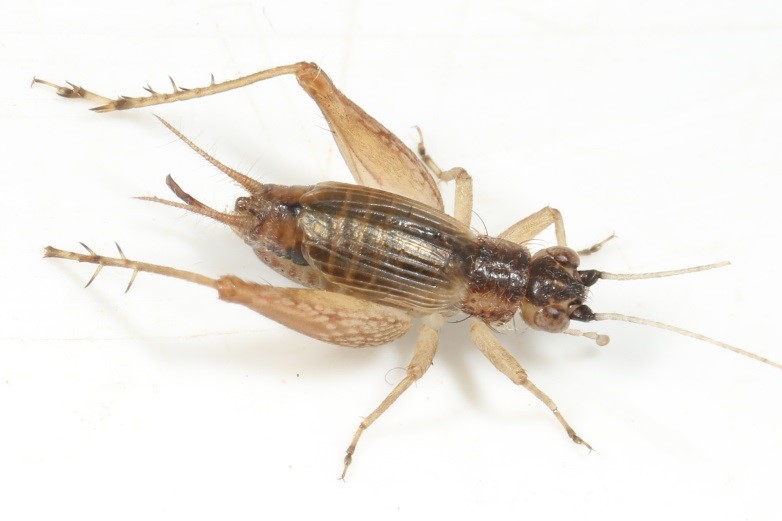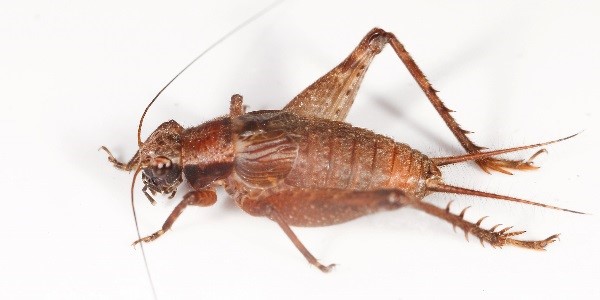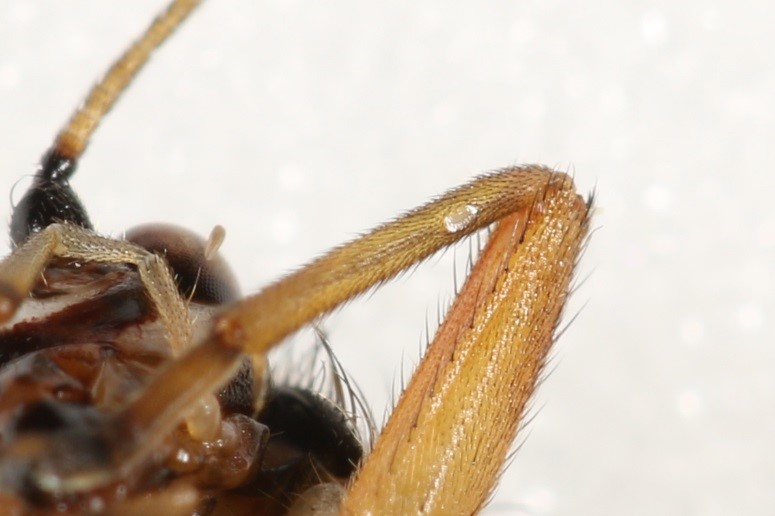
Chirping crickets are an iconic Australian sound. And the rasping calls signify our remarkable cricket biodiversity. In fact, Australia is home to around 200 documented cricket species.
Chances are you’ve heard more crickets than you’ve seen. So how does one identify our elusive backyard buddies? That’s where our new guide book comes in handy: A Guide to Crickets of Australia by You Ning Su and David Rentz.
If you’re crazy about crickets, then you’ll definitely want to add this book to your collection. And if you’re not a fan yet, here are six reasons why you should be.
1. Each species has a unique song
Determining one cricket species from the next is like being a judge on The Voice. Many crickets look the same, but the sound of their voice sets them apart.
Male crickets are the only ones who make sounds. They have two structures on their wings which produce their well-known chirp, known as a file and a scraper. The sound they make from this is kind of like a fingerprint – it’s dependent on a single vein in their tegmen (stiff, membranous forewings which cover the hindwings) which differ between species. Any deviation in this vein could render them silent.
Lucky for you, the guide includes a sonogram for most of the species. Pairing this with the distribution map and photo will help you identify your catch.

2. Males are the lead vocalists
The males are usually the ones who sing because the chirp you hear is actually a mating call! Dating for crickets is quite hard. But instead of your regular dating apps, crickets use different types of sounds to allure females.
They have three distinct signals ranging from calling (I’m here and ready to mingle), courtship (it’s you, baby!) through to an aggressive (back off) sound.
But not all male crickets chirp. Authors from past studies have hypothesised why their chirpy noises aren’t always apparent. Reasons include difficulty in making a sound within their physical environment and evolution of a different form of communication (usually physical).
3. They’ve (literally) got their ears to the ground
You’ll find their ears located in their front legs. The Tympanal organ, which crickets use to hear, is located on outer fore tibia.
This is actually an evolutionary quirk. By having their ears on their legs, they become more sensitive to the sound waves around them created by vibrations. Once the cricket has captured the sound waves, it coverts them and amplifies them to figure out where it’s coming from. A cricket can tell where a sound is coming from by changing its direction and facing another way.

4. We're still finding new cricket species
Some species have been caught for the first time and captured in this guide. This includes the Inland Jules Verne Cricket (Julverninthus minoris), the Daintree Jules Verne Cricket (Julverinthus rentzi) and the Iron Range Forest Cricket (Macrobinthus kutini).
The authors also discovered one little cricket found in New Guinea and Indonesia which also calls Australia home. The Variegated Bell (Anaxipha bifasciata) resides in Northern Australia on both sides of the continent.
5. They can change colours
When most people think of colour change, they think of chameleons. But the guide's authors made a new discovery during their research. Some crickets can change colour due to the ageing process, quite significantly. Over a period of just five days, the Trigonidium australiana’s frons (the middle part of their face between the eyes) had darkened. So much that researchers previously thought they were different forms of the same species.
6. They could make a new food source
As we take steps to limit our impact on the environment, insects could be a sustainable food source in the future. Eating insects is super sustainable since they require only a fraction of the land and water required to farm them. Especially compared to traditionally farmed animals like cattle. Plus they’re full of other great nutrients like omega 3.
But what exactly do these insects taste like? One of our resident insect experts Dr Bryan Lessard (aka Bry the Fly Guy) says they taste surprisingly normal, like a crunchy nut. You can also spice the crickets up by adding your favourite flavourings like chillies or pizza seasoning.
Not game to try a whole insect? Bry suggests you can opt for cricket powders that offer the same great flavour and sustainable protein. Depending on the species farmed, crickets are between 23-65 per cent protein. Cricket powder can be used in foods to produce protein shakes, chocolate chip cookies and even cricket tacos. These recipes (and more) can be found in the book.
But don’t just go out with your guide and start snacking. You should stick to food-grade crickets by authorised sellers.
National Science Week
During National Science Week, we’re sharing ways we can innovate future industries.
